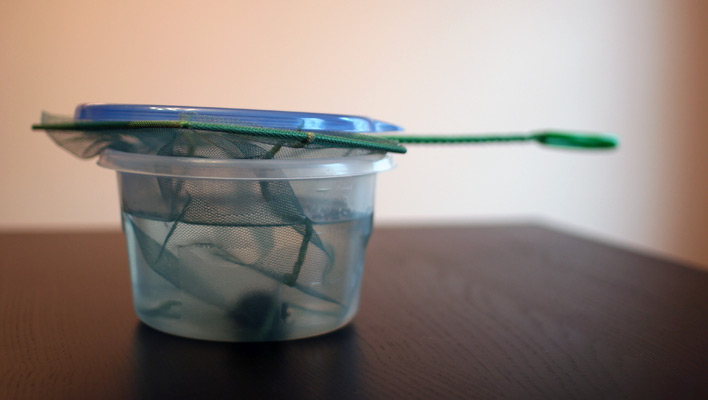All my fish are infected with ich! Now what do I do?
This is the all-too-common lament of impatient hobbyists who habitually introduce new fish to an established aquarium without a period of quarantine and other preventive measures. They may get away with this “pour-and-pray” method for a time, but eventually their luck will run out when a specimen turns out to be sick and spreads disease to all the other fish in the tank.
Here at Saltwater Smarts, we strongly urge hobbyists to quarantine all new specimens in a separate tank for a period of at least four weeks prior to introducing them to their final home in a display tank. But even prior to quarantine, there’s a technique hobbyists can use to reduce the risk of an external parasite, such as saltwater ich (Cryptocaryon irritans), entering their system on a new fish—the freshwater dip.
[Note: A freshwater dip does not replace or shorten the duration of the quarantine period, nor is it effective against all forms of disease. It is merely a hedge—not a guarantee—against certain nasty external parasites.]
How does it work?
Dipping a saltwater fish in fresh water kills external parasites through osmotic shock. Essentially, fresh water diffuses into the body of the parasite, causing it to swell and burst. While the parasites cannot tolerate this osmotic stress, most fish can usually tolerate the relatively brief exposure to fresh water quite well.
What is the process?
We recommend performing a freshwater dip on a specimen right after acclimating it to the water conditions in your quarantine system but before actually transferring it to the quarantine tank itself. Here’s how:
STEP 1
Select a clean, suitably sized (for your specimen) bucket, bowl, small aquarium, or similar vessel, and fill it with purified fresh water with pH and temperature values adjusted to match those of your quarantine tank.
STEP 2
Carefully net the fish out of the acclimation container, and gently immerse it in the fresh water. Placing a transparent cover (such as a sheet of glass or acrylic) over the dipping container will prevent the specimen from leaping out but allow you to observe its behavior and condition.
STEP 3
Closely observe the fish throughout the process. If it is infected with external parasites, you may actually observe them swelling up and dropping off the fish’s body. Also, monitor the specimen’s behavior closely. It’s normal for a dipped specimen to exhibit some agitation, at least initially, or to lie down on its side. However, if the fish is highly agitated and doesn’t settle down, be prepared to end the procedure and transfer the fish to salt water immediately.
STEP 4
After five minutes (or a shorter period in the event of stress), transfer the fish from the dip water to your quarantine tank using a net. Do not pour the contents of the dipping container into your quarantine tank.



